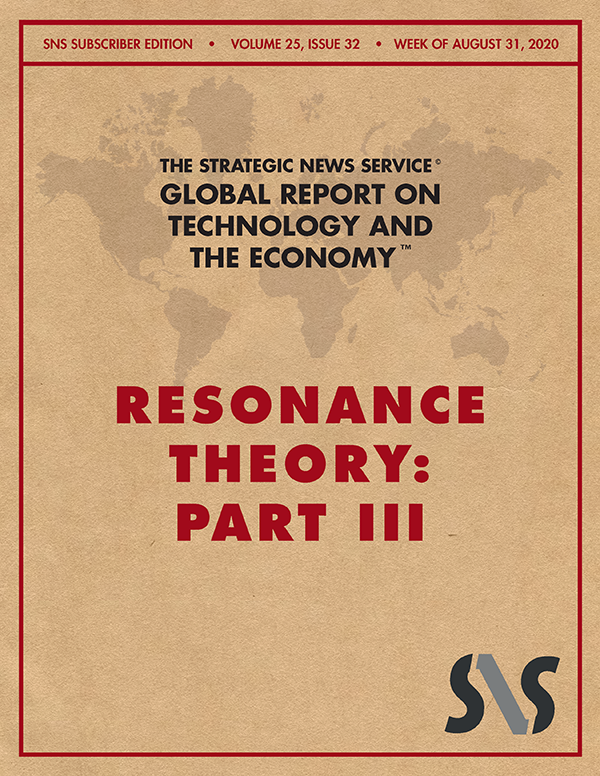
|
Strategic News Service, the first paid subscription newsletter on the internet, was started 25 years ago. In honor of our 25th birthday, we're launching FiRe HQ, a new SNS-wide community platform (stay tuned for the big story and all the little details); hosting a monthly virtual FiReSide Event, where members may meet in intimate conversation with global experts and also interact with one another (click on the ad below to register); and generally continuing a yearlong celebration to carry us into the next 25 years. The new SNS Apparel Shop is officially open for business! And happens to be offering a sitewide 30% discount. There are dozens of items to peruse, all elegantly embroidered with the SNS logo. You asked for it, and now you have it. save the date
RESONANCE THEORY: PART III by Mark Anderson Introduction In this third piece on the Resonance Theory Program, I will describe some of the patterns in the major ideas and equations that provide the basis for physical theory today. These are both fundamental and simple, and should not be difficult for an interested reader to understand. On the other hand, as noted previously, it's likely that all of the ideas expressed here will seem novel, foreign, and perhaps crazy to readers. Even worse (or better), the more academic training in physics a reader has had, the more likely this will be. Patterns in Physics The reason is simple: as noted earlier, the methodology we are using here is based on pattern recognition rather than years of linear study in a specialization. The conclusions offered in Resonance Theory have, in general, been tested in discussions with some of the best minds in math and physics, none of whom have found errors in the tenets or conclusions to date. In our first SNS paper on Resonance, we looked at light traveling through the vacuum, and concluded that "the laws of physics derive directly from the properties of otherwise-empty space." In Resonance II, we explored the geometry of interactions, and the question of whether all of our knowledge in physics comes from collisions along the axis of travel. For those just coming to this work in Resonance III, I would recommend at least reading last week's report, to bring you up to speed with these unexpected ideas and conclusions. |



